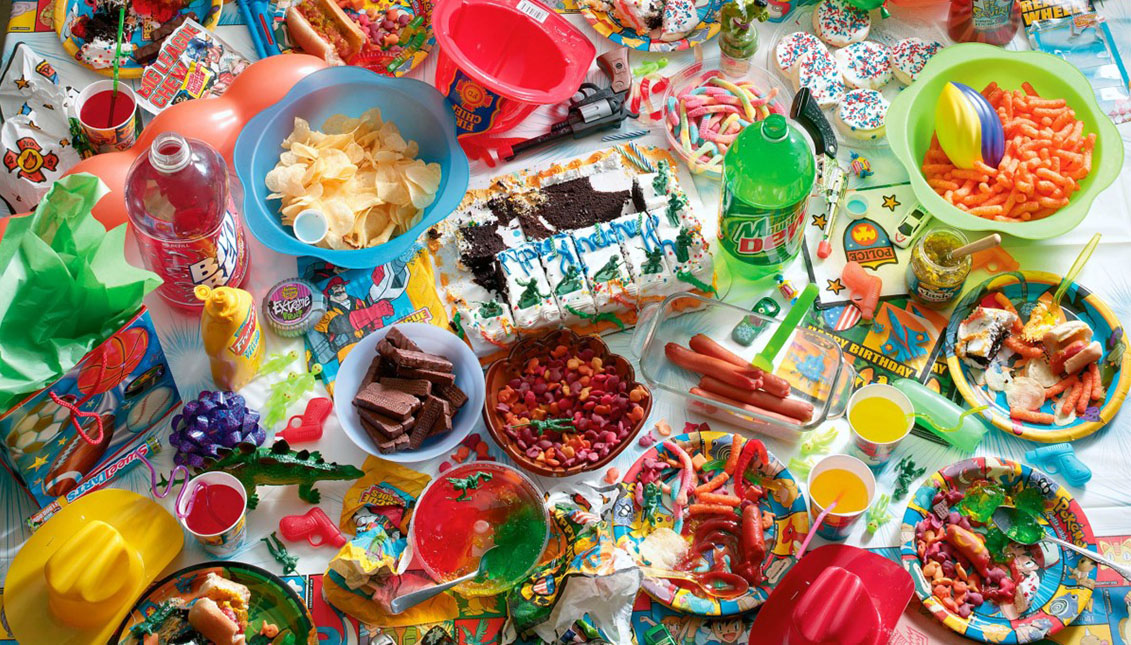
Chuck Ramirez: Looking for the meaning of life and identity in the garbage
On the tenth anniversary of the death of one of the most beloved Texan artists, an exhibition showcases the Chicano's ability to question what we throw away…
We are as much what we keep as what we throw away. A broken mop stick, a corn-stained tablecloth, and garbage overflowing with what is left over from our dishes, what rots silently in the refrigerators. Even the dust that clusters in the cupboard. If it spoke...
Chicano artist Chuck Ramirez was an institution in the art of making objects talk, of rescuing secrets kept by those things we do not give value to, but define us. A decade after the bicycle accident that took his life, an exhibition at Ruiz-Healy Art in San Antonio, Texas, pays tribute to one of his most beloved lenses until Jan. 9.
Irony and reflection on identity have always been the driving force behind Ramírez's inspiration. In a series such as Santos (1996), he explored the setbacks of his dual identity as a son of a Mexican-American and an Anglo-Saxon through photographs that show the chipped base of religious effigies where one can read "Made in Mexico" on stickers, and other times "Made in Italy." Although he was raised with Catholicism, he never felt it was his own and never learned to speak Spanish.
"I was raised a white boy, with television, not art," he once said.
The link to his Hispanic heritage was inherited from his paternal grandmother, Lydia, who influenced his taste for typical cuisine and warm, kitschy interior design — a mixture of the cultures of his country of birth and country of descent.
RELATED CONTENT
His beginnings in art were late. At the age of 30 and after a prolific career as a graphic designer, Ramírez, who lived above the Mexican gallery and store of his friend Franco Mondini-Ruiz, discovered the beauty of the broken and chipped objects of his country of ancestry and became part of the young generation that succeeded the great Chicano fighters for civil rights. At the time, there was a movement formed by figurative painters such as César Martínez or Mel Casas, but Chuck Ramírez and his group wanted to give a twist to those Mexican roots. Not to get rid of them, but see them from another, more transgressive perspective full of humor. It did not sit well with some of the artists already settled in Texas, but art that is kind is rarely the best.
Works such as Dia de Muertos, with its massive remains and cigars on the table, and Seven Days — his most autobiographical work — drink from the double aspect of Chuck Ramírez by reflecting waste as part of identity while allowing himself to be influenced by the international avant-garde and great masters of art history, such as the Dutch geniuses he met during a trip to Europe.
After discovering he had HIV and later surviving heart surgery in 2008, death became a constant concern in Ramirez's work. In projects such as 1999's Long-Term Survivor, Chuck, who was homosexual, collected images of objects that reflected his struggle, such as pillboxes or a penis ring. Sifting through his cameras, death and illness were part of a larger process of self-discovery and honesty.
Also in Quarantine, Ramírez shows bouquets of withered flowers the found while visiting his grandmother in the hospital and that, according to his sister Trish Marcus, he did not see as garbage abandoned in the rooms of the sick, but as a treasure.
In reality, all the garbage was the muse of the Mexican American is both a criticism of American culture based on consumerism and a kind of meditation on life and its imminent end. But beware, because as everything withers, art eternalizes it.
Human even in conceptual terms, with one foot in the America in which he grew up in, and the other in the Mexico of his roots, Chuck Ramírez is an indispensable artist for understanding the identity complexity of Mexican Americans in the United States and a breath of creative freedom, humor and importance in times when frivolity has become the norm.











LEAVE A COMMENT:
Join the discussion! Leave a comment.